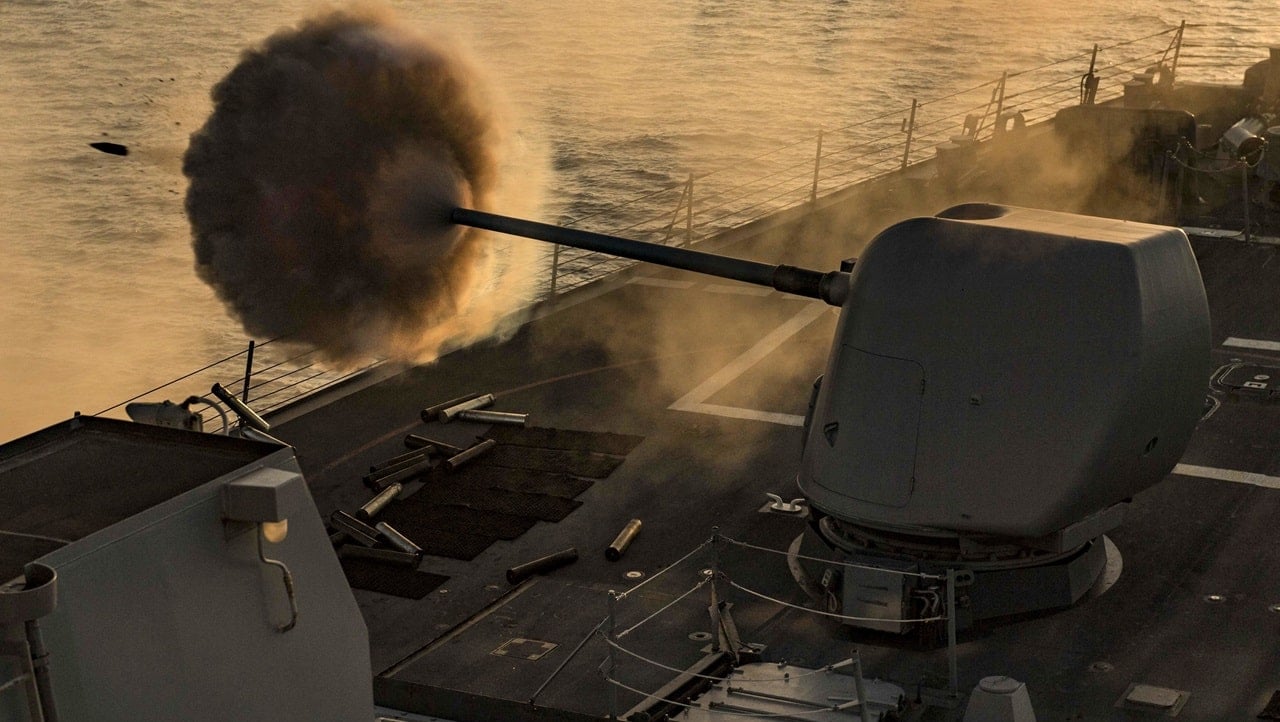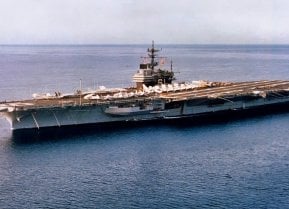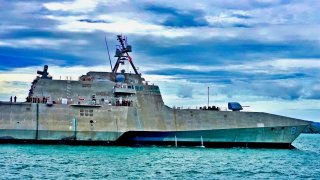The U.S. Navy's Fleet Size Is the Smallest it Has Been since World War I
Washington lacks the shipyards to build and maintain a sizeable U.S. Navy fleet, and the problem will also likely worsen before it gets better.
The U.S. Navy is Getting Smaller Before It Gets Bigger – The Problem is How It Can Build Ship - Here is an alarming fact: the U.S. Navy's fleet size is the smallest it has been since the First World War. Yet, this isn't exactly news to many, as this has been the case since March 2007. The problem is that the Navy will continue to downsize as part of long-term goals to expand.
As this reporter noted just last month, the U.S. Navy has faced this issue before. In the 1880s, the U.S. Navy had just 48 ships in commission and only around 6,000 sailors. Lawmakers were told the service would be unprepared to fight a major war. The U.S. saw the writing on the wall, and Congress authored the construction of the first battleships – the USS Texas and the USS Maine.
During the First and Second World Wars, the U.S. Navy expanded greatly in size. So clearly it could rise to the occasion, but the concern is that it may not be able to do it again.
The issue isn't really the number of ships in the current fleet, it is the fact that the United States simply can't build them fast enough. As numerous outlets, including The Wall Street Journal, have warned, the U.S. can afford a bigger military, we just can't build it!
Washington lacks the shipyards to build and maintain a sizeable U.S. Navy fleet, and the problem is also likely to get worse before it gets better.
It was reported earlier this year that the U.S. Navy would keep a two-ship-per-year cadence for its destroyer line because that was seen as a realistic industry goal – even as Congress has pushed for the service to buy three Arleigh Burke-class Flight III destroyers per year.
"We don't see them being able to produce two a year. And that’s just data. It's not what we wish to be true. But everybody’s struggling with skilled labor. Everybody’s struggling with supply chain. So it's not getting better very fast from the data that I've seen – whether with submarines or DDGs. So two a year seems to be a reasonable place," Under Secretary of Defense Chief Financial Officer Mike McCord told USNI News at the McAleese Conference in March.
A Great And Steady Decline for the U.S. Navy
This isn't a problem that can be laid at the feet of most current lawmakers. It began even before the end of the Cold War.
At issue is that since the 1970s, a total of fourteen "defense-related shipyards" have been shuttered, while only one new shipyard has opened. In addition, the number of firms still in the shipbuilding sector has dwindled.
Moreover, as this reporter also previously noted, the shipbuilding industry is facing an ongoing challenge to attract, train, and retain skilled labor. Just as the U.S. military continues to struggle to fill its ranks, the shipbuilding industry is facing a very serious labor shortage. There are not enough new workers to replace those who are retiring.
Today's young people want to be YouTube stars and TikTok influencers – few express any desire to work in a shipyard!
A Pentagon report released last year warned that the shipbuilding "industrial base today lacks the resiliency and bench strength to meet required demand," and it stressed the need for long-term, prioritized workforce investments.
The entire defense industry must improve the shipbuilding industrial base if there is any hope of solving the problem and ensuring that the U.S. can build enough warships.
"We use the term 'pacing challenge' for China. That pacing, that temporal aspect, is
incredibly important," Russell Rumbaugh, assistant secretary of the Navy, Financial Management and Comptroller, said in his keynote speech at the Eastern Defense Summit in Charleston on Dec. 6, per National Defense.
"I fully believe the U.S. military, especially the Department of Navy, is the best in the world," Rumbaugh added. "That advantage can be lost. It can be lost if we do not outpace China. Yet here we are, letting months slip by."
He further warned that if the U.S. can't move its pace, it will squander its tactical advantage.
"We must strengthen our maritime dominance. We have to," Rumbaugh added, and suggested it isn't just the responsibility of the U.S. Navy. "We need our industrial partners to do more, be more efficient, to expand. We want you to grow, we want you to prosper. Only together, only in partnership, do we all get better."
Rumbaugh is hardly alone in issuing such dire warnings and then calling for change. It is simply a matter of how this will be resolved.
Smaller Fleet Might Not be a Bad Thing
Perhaps the U.S. Navy is right to further reduce its fleet size, rather than to spend money maintaining older vessels that bolster the numbers on paper.
The New York Times reported in September that in just the past eight years, Congress added $24 billion in extra money to build ships, more than any other part of the Pentagon budget, even as lawmakers have cut spending on repairs to the fleet.
Lawmakers have further stopped efforts to retire older ships that the U.S. Navy says provide only marginal warfighting capacity, leaving the service at risk of not being able to afford basic maintenance and staffing costs.

The future may call for higher-tech and likely smaller unmanned vessels. There is no need for massive battleships, especially as the Navy's recruiting goals are at risk of falling short. But the final issue isn't one of money or personnel – it is where the future fleet can and will be built.
Author Experience and Expertise
Peter Suciu is a Michigan-based writer. He has contributed to more than four dozen magazines, newspapers, and websites with over 3,200 published pieces over a twenty-year career in journalism. He regularly writes about military hardware, firearms history, cybersecurity, politics, and international affairs. Peter is also a Contributing Writer for Forbes and Clearance Jobs. You can follow him on Twitter: @PeterSuciu.
Main image is Creative Commons. The text image is from the U.S. Navy/Flickr.


